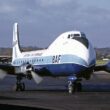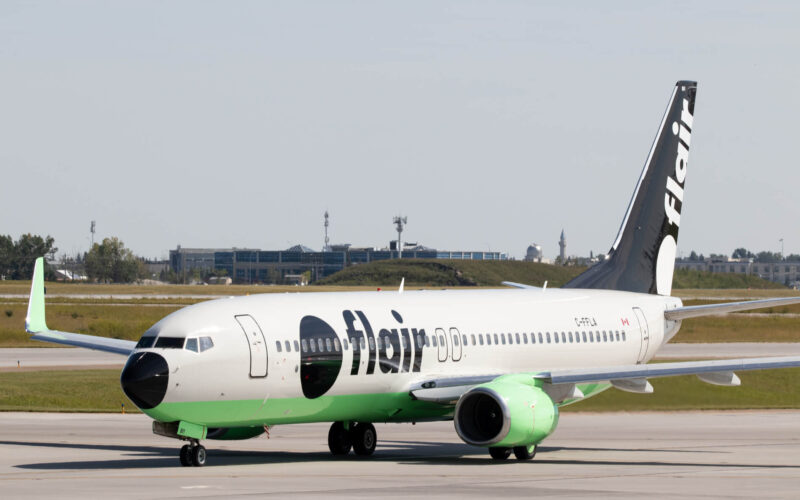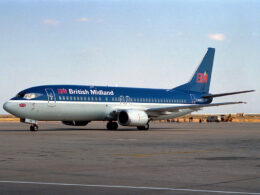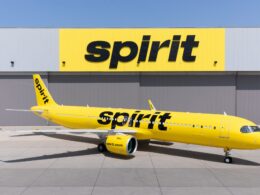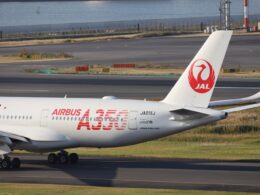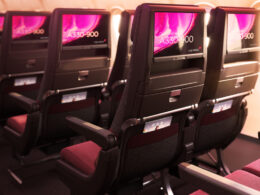There are very few markets across the globe where low-cost carriers are barely present. Surprisingly, Canada is one of them. The 38 million people country, spanning very far and very wide, and with a very healthy economy has as many low-cost carriers as there are fingers on a typical human hand. Even then, Canada Jetlines (JETMF) has not taken off for a flight, while Swoop and Air Canada Rouge are dependent on their legacy airline parent companies. Thus, it leaves the Northern country with two true independent low-cost carriers: Flair Airlines and Sunwing Airlines.
“I don’t think that the Canadian market has seen a true Ultra Low-Cost Carrier (ULCC) yet. There have been various forms of “hybrids” and/or Full-Service Carrier subsidiaries, but the market is ready for genuinely lower fares based on a true ULCC,” the newly-enacted president and chief executive officer of Flair Airlines, Stephen Jones, told AeroTime News.
Jones was most recently involved with a ULCC in Europe, namely Wizz Air. The executive held roles of a Managing Director and Deputy CEO. Previously, the New Zealand-native worked at the Pacific island’s flag carrier, Air New Zealand, where he held the role of Chief Strategy Networks and Alliances Officer.
Now, his latest challenge is taking a small low-cost carrier based in Edmonton, Canada, and challenging the big boys in the country, including the de facto flag carrier Air Canada (ADH2) and the low-cost-turned-legacy WestJet, with its low-cost subsidiary Swoop. It shifted its operations and re-launched as a low-cost carrier in 2017 in its first step to take on the two major Canadian players.
Ambitious plans
“I firmly believe that Canadian travelers deserve a better deal. It’s time for the Canadian public to benefit from true competition and the choice that passengers in every other region of the world enjoy,” Jones publicly stated when he was announced as the new CEO of Flair Airlines on October 13, 2020. The seasoned veteran switched airlines at quite an interesting time. After all, Wizz Air was expanding throughout Europe before Jones closed the door for the final time at the Hungary-based carrier’s headquarters on June 30, 2020.
Meanwhile, Flair Airlines was shrinking. It started 2019 with eight Boeing 737 aircraft, and slowly shrank to its current fleet size of three Boeing 737-800 NextGeneration (NG) narrow-bodies. The crisis hit the airline hard, as it laid-off 130 employees and significantly reduced the salaries of the remaining ones. Only the Canada Emergency Wage Subsidy (CEWS) program allowed the low-cost carrier to rehire its workers and reinstate previously slashed wages.
“It is certainly a volatile time at the moment,” commented Jones, adding in that the company still enjoyed strong support from its shareholders. The privately-owned airline had ambitious plans. In April 2019, it raised money to grow, as 777 Partners, a private equity firm in Miami, United States, purchased a stake in the low-cost carrier.
“Despite having a strong potential market for ULCCs, Canada lags behind the rest of the world in this space. Through this investment, we want to create a viable alternative for consumers in the region, who have faced a lack of air transportation choice until now,” stated managing partner of the investment firm Steve Pasko at the time. 777 Partners bought out a 25% stake in Flair Airlines for an undisclosed sum.
“We felt that the traveling public just doesn’t realize that we have a large firm behind us,” Scott justified the move in an interview with the Financial Post in April 2019. “That should give passengers comfort to be booking the flights.”
The move was seemingly made to address two main issues: passenger confidence and a fragile balance sheet.
Stiff competition
Flair Airlines still has a tough road ahead of it. Despite the relatively small market, competition is stiff. The aforementioned Air Canada Rouge and Swoop have parent companies with robust financial positions. Air Canada (ADH2) ended Q2 2020 with CAD9.1 billion ($6.9 billion) of liquidity, while Onex, the parent company of WestJet and subsequently Swoop, had $1.9 billion of cash at hand. Meanwhile, Sunwing Airlines is a part of Sunwing Travel Group, a major travel company that also includes hotel, retail and tour operation subsidiaries.
But the low-cost carrier is at an advantage over the fact that it is not part of any group, noted the newly-enacted chief executive. “There are no examples worldwide where a true ULCC has thrived under the ownership of a legacy airline,” commented Jones.
“Legacy airlines have cost structures and corporate cultures that will never allow a true ULCC to thrive. Independence is key,” he added.
Furthermore, Jones recognizes the main advantage that Flair has – customer experience. It hails from the fact that the low-cost carrier manages to balance three things at the same time: focus on customers, company culture and commercial success. For example, the carrier has its own app with Wi-Fi onboard on select flights, with plans to launch a new and update the app to “provide seamless customer experience,” Jones commented. Wi-Fi onboard is something that is not usually associated with low-cost carriers, including its main competition. The exception is Air Canada Rouge, which also offers entertainment options streamed to a personal device.
Flair Airlines’ plans are ambitious, added Jones, including the expansion of its fleet and the entrance into markets where legacy airlines are struggling.
“ULCCs can be profitable where other legacy carriers are not and so as those carriers retreat we will definitely be looking to take opportunities,” stated the fresh executive in Canada’s skies. Jones has his experience – after all, serving with Wizz Air will undoubtedly provide valuable experience of taking on the big legacy boys.
“Europe is a very large market, and while Western Europe has very good LCC coverage, in particular, Central and Eastern Europe are underserved and as a consequence, there is a huge amount of untapped growth. Canada is similar in that there is a lot of demand that is unserved because of the high fare environment, and it can also be served by narrow-body aircraft – it is just not as populous as Europe.”
Whether Flair Airlines can truly make dents in Air Canada (ADH2) or WestJet’s market share remains to be seen – after all, three aircraft is just that, three. Seemingly, its success will depend on momentum going forward as the industry stabilizes and travel returns to some sense of normality. Flair’s success will also depend on how its competitors will react. The aforementioned Canada Jetlines (JETMF), which is yet to take off for its first flight, has accused Swoop of swooping in and offering ticket prices below operating costs on routes that Canada Jetlines (JETMF) was supposed to launch.

